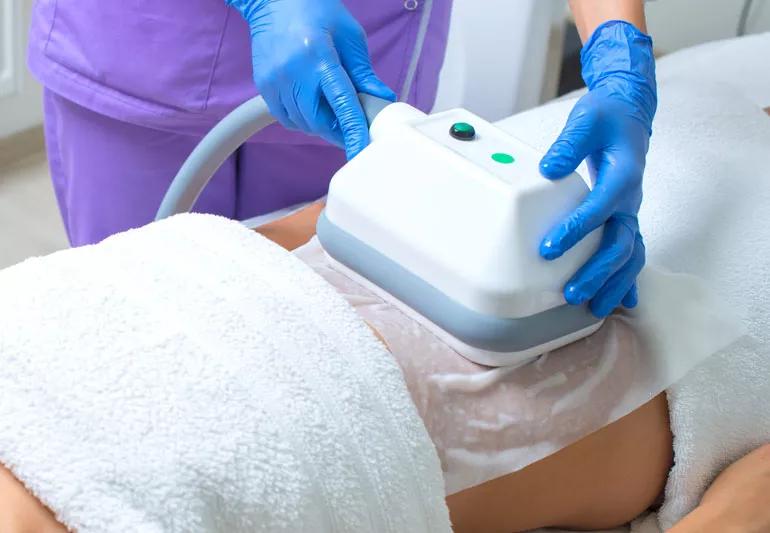Advertisement
What you need to know about the latest options

It’s frustrating. You spend hours at the gym each week and eat a clean diet, yet those stubborn areas of fat aren’t responding to all your hard work. You might be curious about non-surgical body contouring treatments that target and destroy fat cells without surgery like CoolSculpting®, SculpSure®, UltraShape®, truSculpt® and Vanquish®.
Advertisement
Cleveland Clinic is a non-profit academic medical center. Advertising on our site helps support our mission. We do not endorse non-Cleveland Clinic products or services. Policy
Some of these options work by freezing fat cells while others employ heat through the use of ultrasound or radiofrequency energy. They offer a targeted way to reshape areas such as your abdomen, love handles, thighs and upper arms.
But are they safe? Are the changes permanent? How quickly will you see results?
Dermatologist Shilpi Khetarpal, MD, answers common questions about these minimally invasive body-shaping solutions.
These are minimally invasive treatments and side effects are mild. Some treatments have no downtime, either. However, it’s a good idea to review your health history when you talk with your practitioner about which treatment is best for you.
All types of body contouring devices work best for those who have a normal body mass index (between 18.5 and 24.9). They do permanently destroy fat cells.
It depends on which area you want to focus on. The American Society of Plastic Surgeons recommends liposuction for those who want to treat excess fat over a larger area of the body. Non-surgical treatments gives you a less dramatic change and destroy the amount of fat you can pinch, called cutaneous fat.
Advertisement
“Non-surgical techniques won’t offer the same results as you would from a surgical procedure,” says Dr. Khetarpal. “Liposuction gets rid of about 10 times the amount of fat, compared to these noninvasive treatments body sculpting.”
The procedures all work essentially the same way: They target and destroy fat, which your body’s lymphatic system then filters away over time, generally within a few months.
Here are details on each technique:
All the treatments get rid of fat in stubborn areas. Here are some other general facts:
Advertisement
It’s crucial to do your homework and choose a provider carefully because a trained physician is your best bet for good results. Just because you find a great deal online doesn’t mean that you’re going to get top-notch results. Be sure to look at the physician’s previous work and always ask questions.
“The treatments are safe and effective, but things can go wrong if the provider doesn’t operate the equipment correctly,” she says. “You get what you pay for, so do your research.”
Advertisement
Learn more about our editorial process.
Advertisement

Hormones, water retention and even exercise can play a part in daily weight changes

Rapid weight loss isn’t sustainable or healthy — for weight loss success, focus on long-term solutions

This diabetes medication can treat obesity, but it’s not for people who just want to drop a few pounds

Focus on your body’s metabolic set point by eating healthy foods, making exercise a part of your routine and reducing stress

The U.S. FDA prohibits HCG use without a prescription — and the hormone isn’t approved for weight loss at all

Juicing cleanses don’t target fat loss — and you’ll lose important nutrients in the process

The science on ACV isn’t very promising for weight loss or appetite suppression

Genetics, metabolism and hormonal fluctuations can all make weight loss more difficult

Focus on your body’s metabolic set point by eating healthy foods, making exercise a part of your routine and reducing stress

PFAS chemicals may make life easier — but they aren’t always so easy on the human body

While there’s little risk in trying this hair care treatment, there isn’t much science to back up the claims